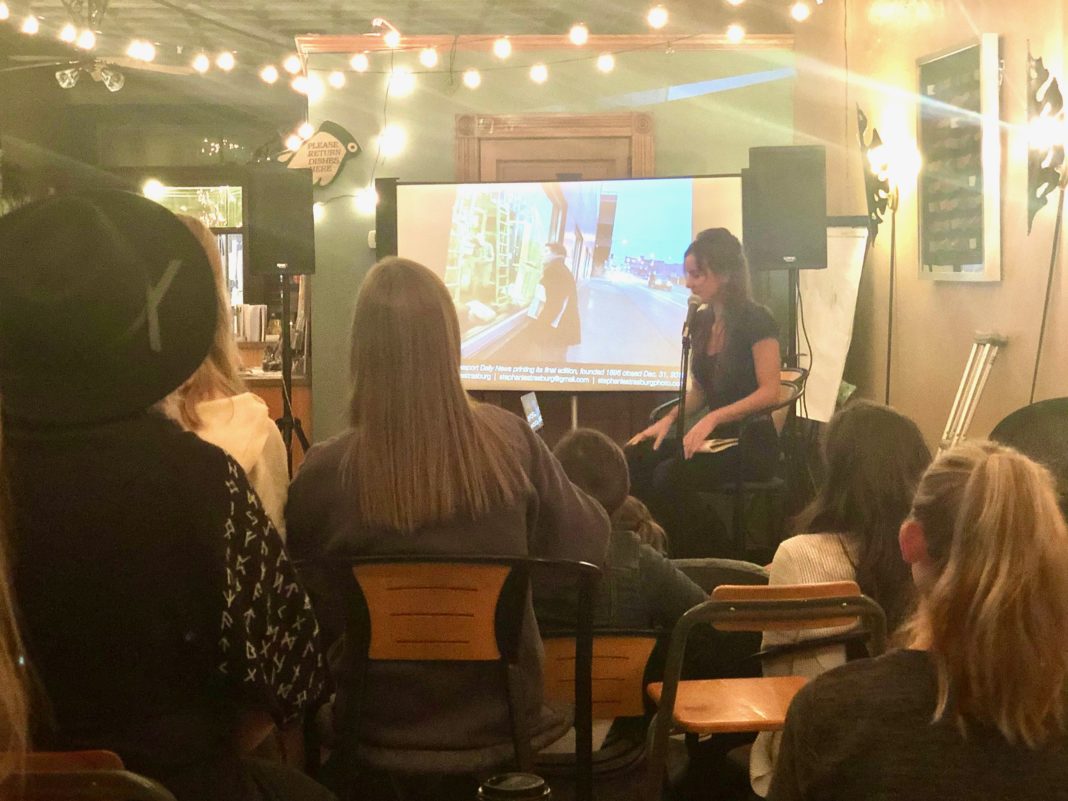One creates a podcast, another is a photographer and the other draws mazes and cartoons in front of an audience.
These people are all storytellers, and they all use more unconventional modes to tell their stories.
The Stone House Center for Public Humanities (CPH) hosted “Plot Device: Media & Storytelling” at Beans on Broad in Grove City on Tuesday, Oct. 29, allowing storytellers of unconventional types of stories to share their experiences.
The event featured three storytellers: Thomas Thompson, a recent SRU graduate and podcaster, Stephanie Strasburg, a staff photographer for the Pittsburgh Post-Gazette, and Joe Wos, a cartoonist and creator of MazeToons.
Anna Potter, a junior creative writing major and student worker for the Stone House, said that she hopes that the event inspires others to tell stories in their own way in any medium.
“We wanted to pick storytellers who use very unorthodox mediums who break the stereotype of the traditional storyteller,” Potter said. “Even just through the people we picked, we wanted people’s minds to kind of be reshaped in how they think about stories and storytelling.”
Thompson’s podcast, “Dirty History,” tells stories in history that aren’t typically in the public eye. Although Thompson doesn’t consider himself a historian, the podcast allows him and his team to serve as storytellers.
“You don’t need a Ph.D. to tell a story, which is essentially what we’re doing in this podcast,” Thompson said.
Thompson has creative freedom over his entire podcast, which also led to his decision to focus on narratives in his podcast instead of interviews.
“There’s something about being able to essentially having a monologue, a lecture, total creative freedom to tell a story without having to rely on anyone else,” Thompson said.
For Strasburg, a Pulitizer Prize-winning photojournalist for the Pittsburgh Post-Gazette, her work includes documentaries, investigative pieces and long-form storytelling. She was part of the team that reported on the Tree of Life Synagogue shooting in October 2018.
At Plot Device, she largely discussed her work on the project “Life and Death and Santron Avenue,” a long-term story that investigates the opioid crisis, specifically in Pittsburgh’s Carrick neighborhood.
“The job of a photojournalist in the age of Instagram is not to take photos that get likes, but to show people who we are when we’re unfiltered, to sometimes make photos that are hard to look at and to do so while respecting the dignity of people in those photos,” Strasburg said.
Strasburg said long-form stories build overtime. This not only adds layers and complicates issues in the story itself, but also allows the storytellers to build relationships with the people they are covering.
“It’s very rare that somebody is black and white, and I think that’s something I realized,” Strasburg said. “We’re gray, we’re complicated, we’re messy, we’re something in the middle, and that’s part of what connects us.”
Wos’s work as a cartoonist began when he was 14. Since then, he has always been thinking about his next project.
“When I’m not drawing, I’m thinking about what I’m going to be drawing, Wos said.
As a cartoonist, illustrator, performance artist and master maze maker, Wos said that people’s love for cartoons represents the connection people feel with characters, especially with cartoons like Peanuts and Winnie the Pooh.
“There’s something for everyone,” Wos said.
Click here for more information about Stone House events.







